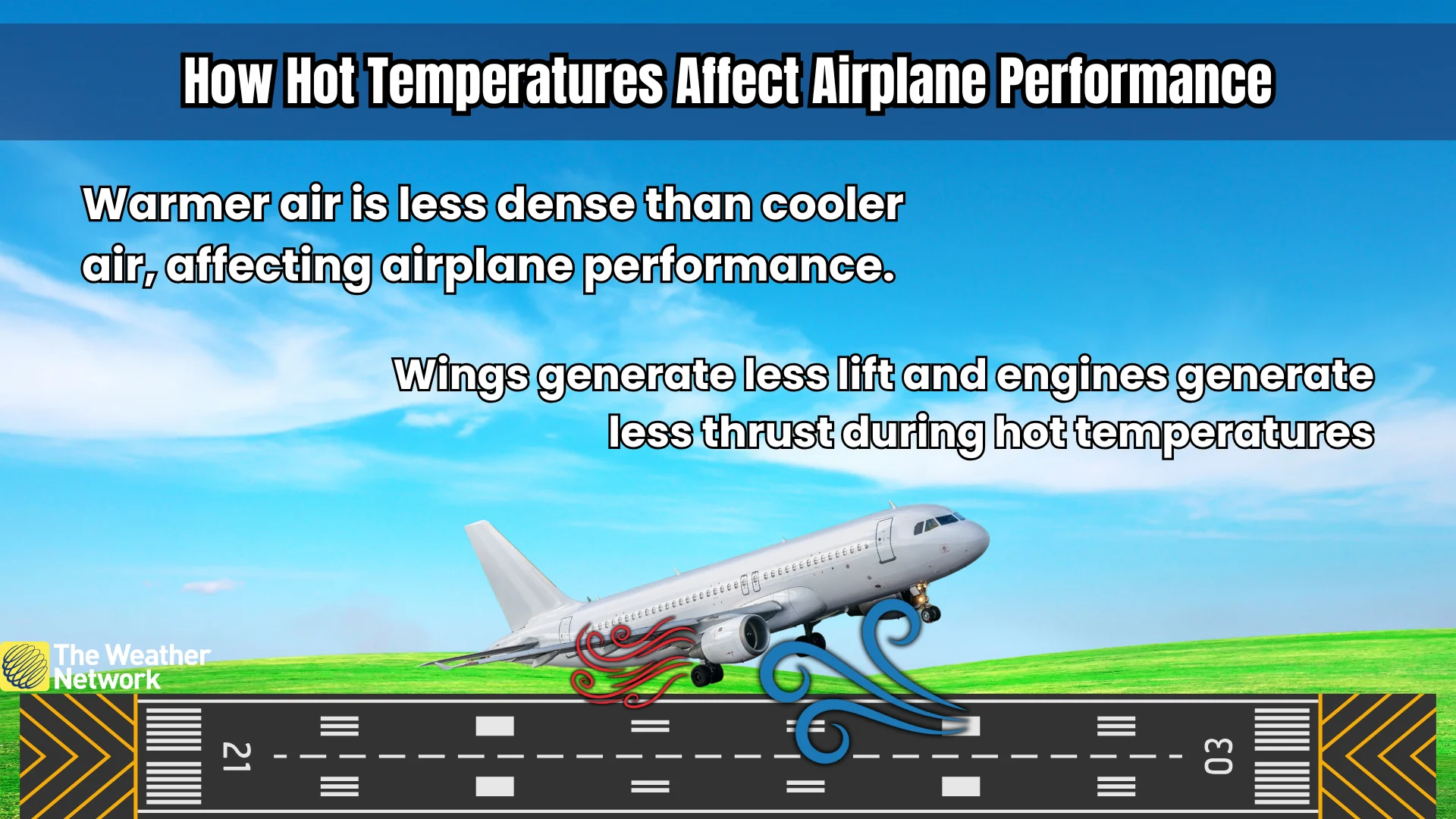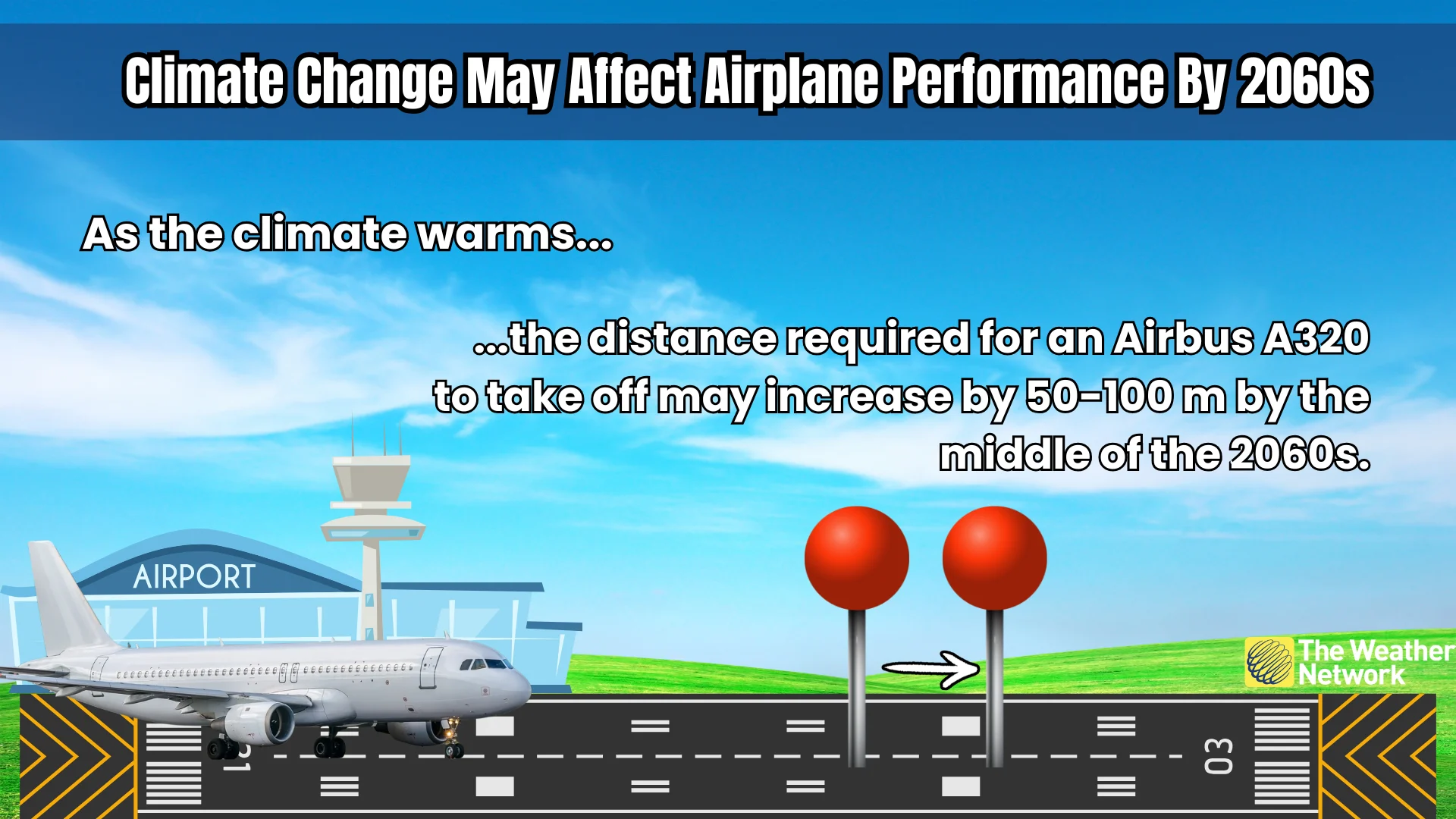
Climate change may force airlines to leave some passengers behind, study finds
Warmer temperatures could noticeably affect airplane performance by the middle of this century
Climate change may leave airlines with no choice but to pack fewer passengers onto flights in order to get off the ground, per the results of a study conducted by a team of meteorologists and climate experts.
The paper, released earlier this year in Aerospace, focused on passenger flights departing from dozens of busy European airports to determine how a warming climate may affect these critical operations in the not-too-distant future.
DON’T MISS: Is Earth really getting too hot for people to survive?
Hot weather affects airplane performance
Air temperatures play a role in a plane’s performance as it barrels down the runway.
Warm air is less dense than cooler air. Not only will an airplane’s wings generate less lift while operating in hot temperatures, but the engines will also produce less thrust.

This requires the plane to travel farther and faster—using up a longer length of runway—in order to build up enough speed to take flight, likely posing a problem for airline operators as the climate warms.
The study analyzed the takeoff requirements for the Airbus A320, one of the most widely used passenger aircraft in service today. Authors compared those requirements against different climate change scenarios by the middle of this century.
Planes need more speed, or less weight, for future takeoffs
Researchers used several climate change scenarios—ranging from “sustainable development” to “fossil-fuelled development”—to measure the potential impact of rising temperatures on flights departing from 30 airports across Europe.
The list includes 25 of the continent’s busiest airports, as well as several other busy airports with notably short runways, including San Sebastián, Spain; Chios, Greece; Pantelleria, Italy; and Rome’s Ciampino Airport in Italy.
Researchers found that “a given aircraft configuration in a warmer world will require a longer distance before takeoff occurs.”
That might not be much of a problem for Madrid’s Barajas Airport, where the longest runway is 4,350 m long, but runways are far shorter at many other airports.
“If there is a limited takeoff distance (i.e. a particular runway), the maximum aircraft mass must be reduced,” the experts added.

MUST SEE: Heat waves, floods, droughts more extreme now due to climate change
In other words, a warmer climate with more instances of extreme heat will likely increase the distance required for the Airbus A320 to take off by the middle of this century, and airlines operating at airports with shorter runways will have to reduce the weight of their aircraft in order to take off at all.
How much weight are we talking?
“Even with the most optimistic future projections of greenhouse gas emissions,” the study notes, “our model indicates that the maximum takeoff mass may have to be reduced by a weight equivalent to approximately five passengers per flight by the mid-2060s.”
Climate change is already exacerbating heat waves around the world. Airlines routinely adjust schedules and loads to accommodate extreme heat events, especially at airports with short runways or where there’s dangerous terrain around the airport.
American Airlines cancelled more than 50 flights into and out of Phoenix, Arizona, during a 2017 heat wave, according to a report from USA Today. The bout of heat saw temperatures climb to 48.8°C (120°F)—higher than the regional jets’ maximum operating temperature of 47.7°C (118°F), per the news report.
Contains files from USA Today.

